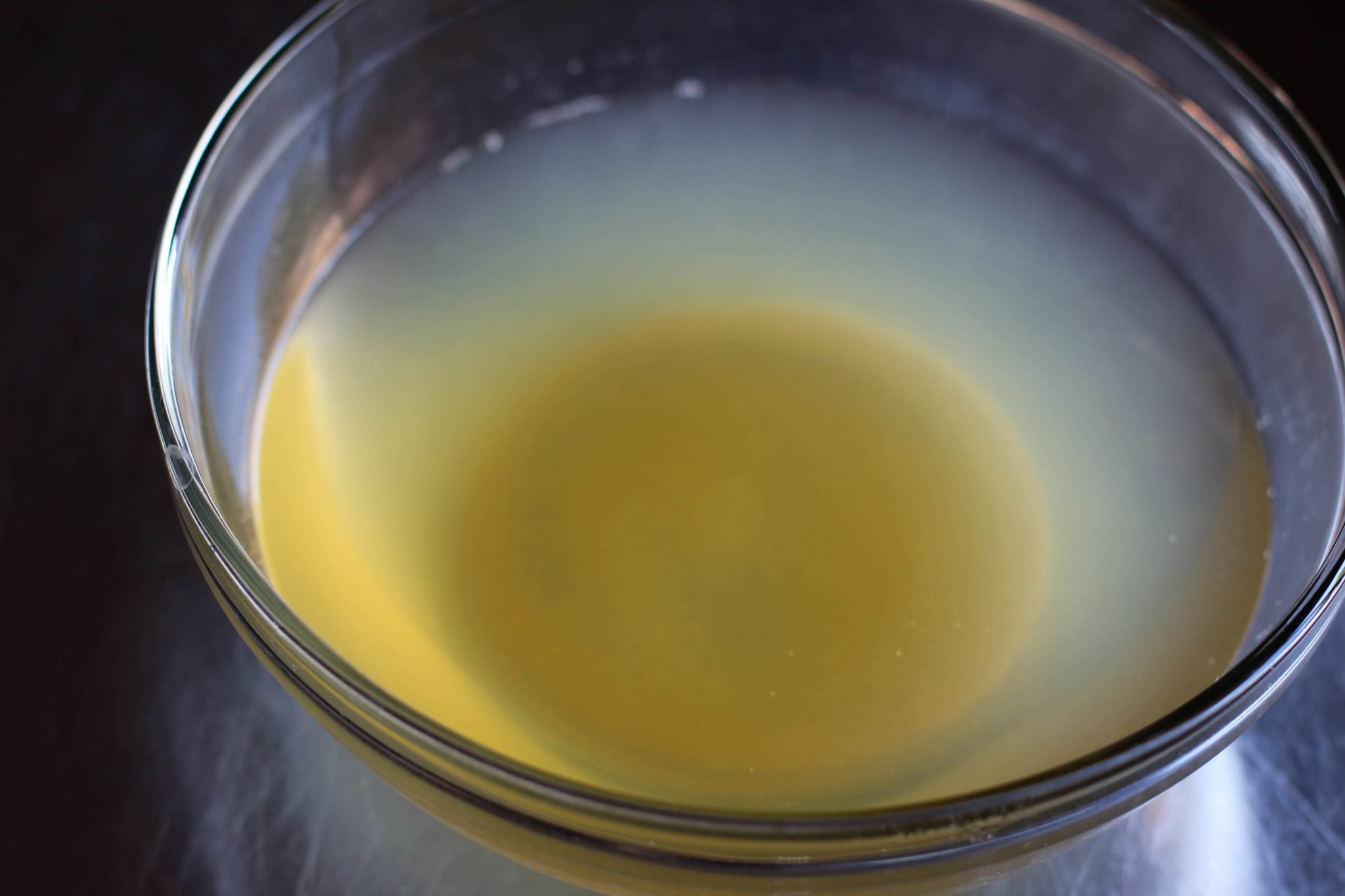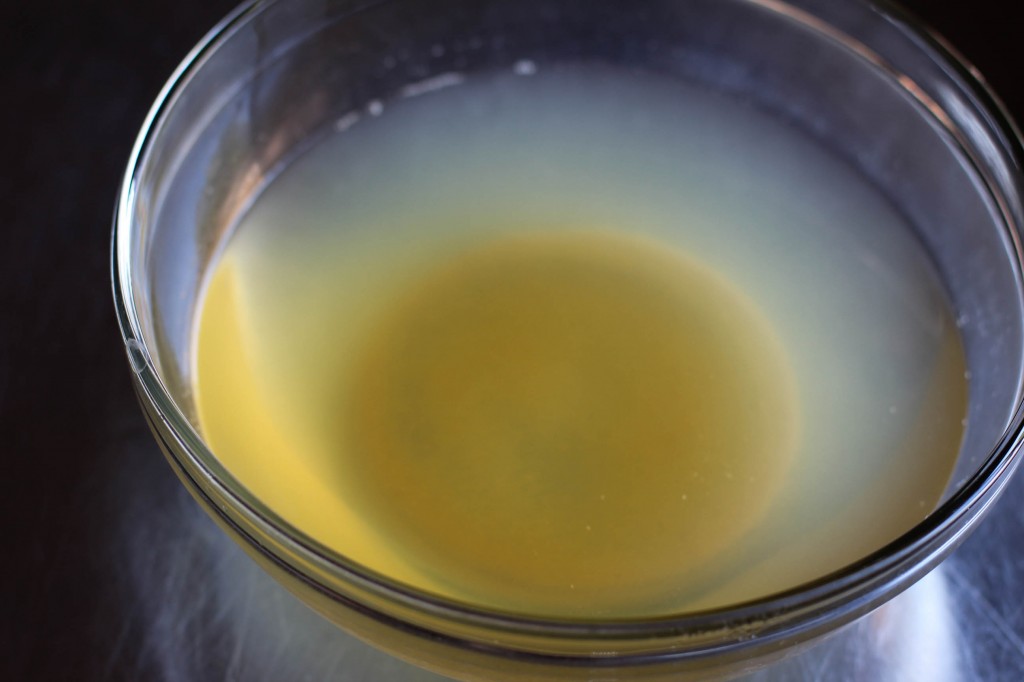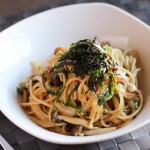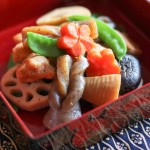Ichiban Dashi (一番だし) is a Dashi broth using a combination of Kombu (Dried Kelp) and Katsuo (Dried Bonito Flakes). You can use either one of these ingredients to make Dashi; however, Ichiban Dashi uses both and that gives a much richer and more complex flavor to the broth.
Dashi is a very important component in Japanese cooking, like chicken or vegetable broth in American food. It has a savory taste (“Umami”), and that gives a lot of dishes and soups the base of the flavor. Ichiban Dashi uses fresh, new Kombu and Katsuo (Ichiban means first), so it has a stronger taste than regular Dashi. It is perfect for clear soups in which you’ll enjoy the Umami taste and aroma of Dashi more directly than other dishes that have a lot of seasonings. Because of the Umami, you will be able to use less salt and other seasonings.
You can reuse the Kombu and Katsuo again for another batch of broth to use up all the left over Umami, and that is called Niban Dashi (Niban means second). Niban Dashi is a less strong Dashi, so use it in Miso Soup or Nimono (boiled vegetables and meat).
We also have a simple Dashi recipe if you prefer to use it.

Ichiban Dashi
Ingredients
- 4 cups water (about 1 litter)
- 1 sheet Kombu dried sea kelp ("4 x 2" (10 cm x 5 cm) )
- 1 handful bonito flakes (Katsuobushi)
Instructions
- Put Kombu in water in a pot, and heat at medium heat until just before boiling. Remove Kombu.
- Add Katsuobushi and let the water boil, then immediately turn off the heat. Leave it for 5 minutes and strain.



17 Comments
The first time I made this it came out a bit weaker than I would have liked, but the second time around I let the kombu soak in the water for some hours and the taste came out much more to my liking. That being said, this was a perfect introduction to dashi, much appreciated!
James,
I like you’re adjusting the recipe the way you want. That’s home cooking!
Thank you for your simple yet tasty dashi recipe. But I was wondering what is normally done with the kombu and bonito after making the dashi? It seems like a waste to throw it away in the garbage.
Geoge,
you could season bonito flakes and kombu after making Dashi to eat.
About how much dashi does this yield?
Melissa,
about a litter.
Is all Katsuobushi the same (taste)?
Phil,
no, but similar. If it’s Japanese brand Katsuobushi, it is most likely to be good quality.
I lived in Japan for a few years in the 80s but only did a little Japanese cooking. Now, I’m starting to play with making my own dashi. I’ve got konbu and katsuoboshi. I see the recipe. Is there any reason why one couldn’t add a piece of konbu to a simple Italian soup like stracciatella which combines chicken broth with water to add, perhaps, another dimension?
Also–can you tell me the difference between MAkonbu and konbu?
Chris,
I bet Japanese Italian-food-chef would do that sort of thing! Go creative! Makonbu is expensive kelp and used to make rich Dashi…so they say, but I can’t tell the difference 🙂
I’m thinking of buying à large amount of katsuoboshi. For how long can you keep iT once opened and how do you store it.
I really like you’re recipes.
Menno,
you could freeze, but I would not buy too much at once since you may not be able to consume before expiration dates.
Just curious, has anyone ever used ichiban dashi or plain dashi when making rice instead of water? I sometimes use chicken broth to add more flavor.
Aaron,
may be good for seasoned rice called Takikomi Gohan. We have a recipe, so try it!
Dearest,
I’m really about it to cook my own dashi. I love it but never liked anything smelling fishy. Yet I tried kombu and katsuobushi cooked with rice, because I was hungry and didn’t had patience for cooking separetely, it was nice. I really love your recipes!
My question is: What means this 4″x2″ for how much kombu one should take? For I’m european, I don’t get it. Does the “” means inch like for monitors? But what means x2 then? Thanks a lot for helping
In my asia store one could buy kombu specially for making dashi, I guess the difference is that it isn’t cut too much, it’s in quarters, bigger than nori
How can you store leftover dashi? In the refrigerator? On the shelf? How long is it good?
How long does the daishi keep for?